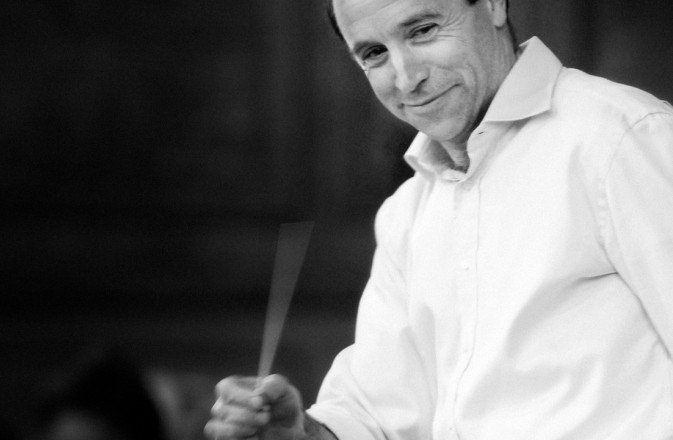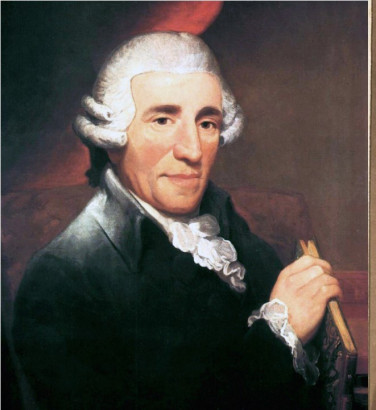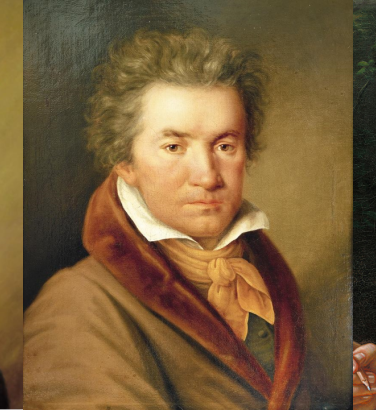
Mark Wigglesworth on Beethoven's Fifth
3 Apr 2023
News Story
Portrait of Beethoven by Joseph Mähler, 1804 (detail)
Few would disagree that the opening of Beethoven’s Fifth Symphony is the most famous two seconds of music ever composed. But not withstanding the self-perpetuating nature of fame, why these iconic four notes have resonated so far and wide goes to the heart of what we want music to be and the purpose we want it to serve.
Neuroscientists have shown how well the brain responds to short simple rhythms, and how our expectations are rewarded by their frequent repetition. Many of the most popular classical pieces have a concise and recurring rhythmic gesture as their defining characteristic. But the start of Beethoven’s Fifth is more than a rhythm. It’s a force that grabs you with uncompromising directness, a power made all the stronger by its simplicity – an unequivocal and charismatic demand to be heard.
The oft-repeated description of the famous four-note motto as ‘fate knocking at the door’ is not Beethoven’s own, but given how much he wrote about fate, quoting both Shakespeare and Homer on the subject in letters and diaries, it was certainly something that engaged him greatly. On some occasions he suggested that we should submit to fate, courageously enduring whatever might be, but at other times he saw fate as an imposter, an enemy we should be determined to overcome. In fact destiny is a more correct translation of the word Schicksal that Beethoven uses. And for Beethoven there would have been an important difference. There is something resigned about fatalism, whereas destiny has a more positive implication, one in which we have a greater control over our circumstances than we might be tempted to suppose. Both might be somehow pre-determined, but destiny offers us a greater opportunity to make choices that channel our life into the direction we want it to go.
The composer himself provided the key to these depths [of the Fifth Symphony] when one day, in this author's presence, he pointed to the beginning of the first movement and expressed in these words the fundamental idea of his work: "Thus Fate knocks at the door!"
The opening gestures of Beethoven’s Fifth are actually not as confident as they sound on the surface. Bold obviously, and with a seriousness of tone made explicit by the orchestration employed, but the pauses create a rhythmic instability and combine with an ambiguity of harmony to undermine the music’s superficial determination and create, even if only in our subconscious, a longing for resolution of the conflict between certainty and doubt. The movement is both epic and personal, and there is a friction between the senses of inevitability and possibility that fuels its intensity. In the end it is the music’s incessant drive that wins out over the arresting pauses and restraining pleas to hold it back.
The theme and variations movement that follows provides welcome calm. There is something relaxing about this form, with its constant revisiting of the same tune heard through different levels of activity and colour, and though it offers an oasis for self-reflection, we hear glimpses of what the symphony’s ultimate victory might sound like. We see some light at the end of the tunnel before the next movement returns us to the restless inner turmoil with which the work began.
The contrasting moods of the third movement are clearly defined. Memorably described in E. M. Forster’s novel Howard’s End, it begins with ‘a goblin walking quietly over the universe’ observing ‘that there was no such thing as splendour or heroism in the world’. This desolate vision is interrupted by the four-note motto returning with a sense of ‘panic and emptiness.’ And the trio of ‘dancing elephants’ is hardly light relief. Beethoven feels we need to be reminded of the dark in order for the finale’s sunlight of hope to arrive with an appropriate level of jubilation.
When the last movement finally blazes in, it does so heightened by the arrival of three new instrumental colours. At the top of the scale, a piccolo; at the bottom, a contra-bassoon; and in the middle, for the first time ever in a symphony, three trombones. Beethoven has not only increased the range of pitches available, but filled out the centre with a completely new symphonic sonority. It’s an all encompassing grandeur that extends the limits of what victory can feel like. Nevertheless, this is a victory that has to be continuously earned. The return of the scherzo in the middle of the finale is a warning against complacency. This is not some idealistic fairy-tale. Darker forces can reappear at any time, and must be defeated every time. It is Beethoven’s emotional honesty that is so telling here, and I believe one of the reasons behind the symphony’s popularity.
Beethoven’s fundamental belief in the ‘rights of man’ meant he never really accepted the notion of forces beyond our control. And many millions since have heard his Fifth Symphony as an inspiration not only to tackle personal and universal challenges but to succeed in overcoming them too. It was an obvious choice for the scientists who had to decide what music to send aboard the 1977 Voyager journey into outer space.
When Martin Luther King penned ‘I have a dream,’ we have no idea if he was tapping into Beethoven’s iconic rhythm. Nor is there any evidence to suggest that Samuel Morse’s decision to use short-short-short-long to represent the letter V was based on Beethoven’s Symphony No V. But extrapolating the motif to represent V for victory, and a symbol of democratic freedom, was certainly a conscious choice on the part of the allied resistance to fascism. And when the musicians in Auschwitz were deciding what to music play, they would have been fully aware of the significance of choosing a work, especially a German work, that expressed such defiance, and the ultimate triumph of the human spirit over seemingly all-conquering forces. It takes courage to be optimistic, and at times resilience too. Beethoven shows us it is worth it.
© Mark Wigglesworth

Beethoven's Fifth
After opening with Britten at his most playful, Mark Wigglesworth and the Orchestra are joined by Laura van der Heijden for Shostakovich's Cello Concerto No 2. With Beethoven's Symphony No 5 to close, expect a thrilling journey from fraught tension to jubilation!
Related Stories
![]()
Haydn, Father of the Symphony
22 September 2025
In the latest in our series looking at the symphony, what makes Haydn so significant in its development?![]()
Symphonies and their nicknames
8 September 2025
Beethoven's Fifth has a nickname? Well, it does according to some people ...![]()
Beethoven's 'lesser' symphonies
26 May 2025
Why are some Beethoven symphonies better-known than others?


